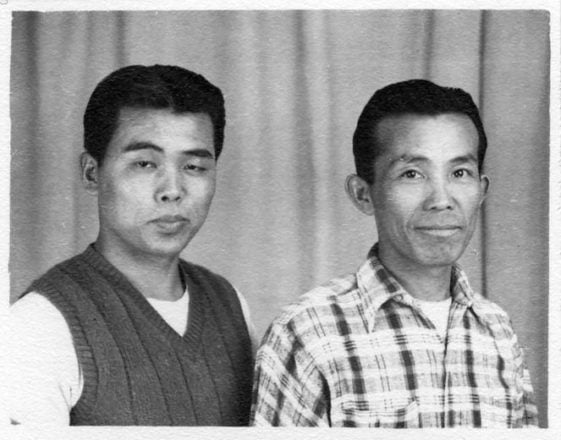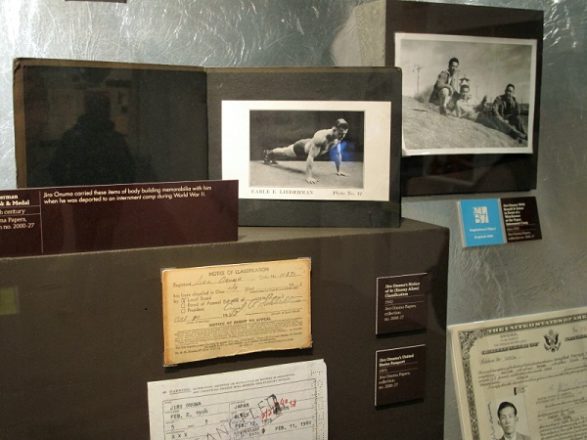
This photograph of Jiro Onuma, right, with his boyfriend, Ronald, at the Topaz Internment Camp (circa 1943) is part of the Jiro Onuma Papers in the collection of The GLBT Historical Society. Photo: The GLBT Historical Society.
Jiro Onuma, a working-class gay San Francisco resident, was among the approximately 120,000 men, women and children of Japanese ancestry living on the West Coast during World War II who were rounded up and imprisoned on 10 internment camps, or “relocation centers,” in seven states. Almost 2/3 of the people forced from their homes were United States citizens.
U.S. CITIZENS IMPRISONED
These residents — whose only crime was being Japanese — received no judicial trials or hearings and were forced to live on desolate, barbed-wire enshrouded camps in Arkansas, Arizona, California, Colorado, Idaho and Wyoming.
Their pain and suffering was the result of President Franklin Delano Roosevelt’s Executive Order 9066, which Roosevelt signed on February 19, 1942, about nine weeks after the U.S. entered World War II.
RARE GAY PHOTOS
Historic materials documenting life for gay people on these camps is extremely rare; however, San Francisco’s GLBT Historical Society has some extraordinary items in its archives, such as Onuma’s papers, which include four photographs of Onuma and his friends at a camp near San Francisco and at a camp in Utah. One photo is displayed at the GLBT History Museum in an exhibit honoring Onuma, who died in 1990.
According to historian Tina Takemoto of the Densho Encyclopedia, “Onuma’s wartime pictures might be the only known photographs of adult gay Issei in the American concentration camps.”
LIFE ON A U.S. CONCENTRATION CAMP
With 8,000 other Japanese Americans and Japanese nationals, Onuma was first held for five months in 1942 in crudely converted horse stables at the Tanforan Race Track south of San Francisco. He was subsequently transported to the Topaz Internment Camp in central Utah until May 1944, according to the Densho Encyclopedia and GLBT Historical Society.
At Topaz, Onuma managed to establish a clandestine relationship with a fellow internee named Ronald; his last name is unknown. Less than a year later, the couple was forcibly separated when Ronald was transferred to Tule Lake, a high-security segregation camp for internees that military authorities claimed were “disloyal.”
‘RACE PREJUDICE’
Almost four decades later, in 1980, Congress established the official Commission on Wartime Relocation and Internment of Civilians to investigate this dark episode in U.S. history. In its final report, the commission said that the internment had been motivated by “race prejudice, war hysteria and a failure of political leadership.”

A display at The GLBT History Museum tells the story of Jiro Onuma, a gay Japanese immigrant who came to San Francisco in 1920 and who was imprisoned an internment camp during World War II. Photo courtesy of GLBT History Museum.
